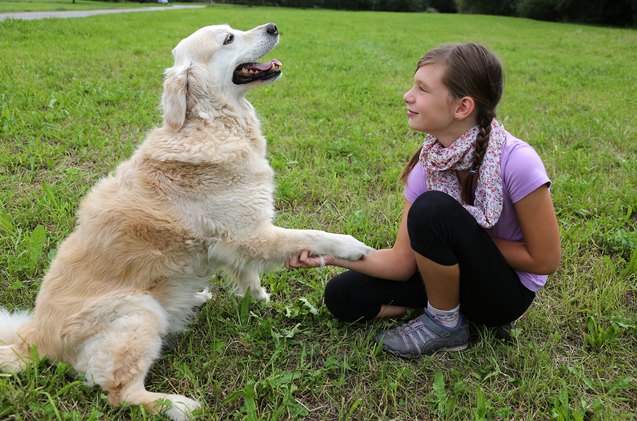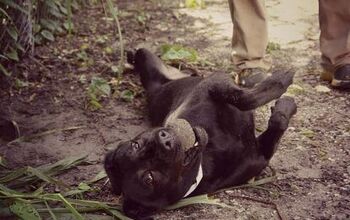Preventing Dog Bites: Tips To Teach Children


The first instinct of many children when they see a dog is to run over to him for a hug, screaming the entire way. Even the most mild-mannered dog might exhibit aggressive behavior if he is threatened or frightened. When a dog is scared, he might act differently than normal and that is when he is most likely to bite. In many cases, it is not the dog’s fault but the person’s fault for pushing the dog to the point of breaking where he feels like biting is his only course of action. There are a number of things you can do to prevent dog bites and some important lessons you should teach your children to keep them safe.
Related: Liam J. Perk Foundation: Dog Safety Awareness And Education For Families
Talking to Your Kids
Many children love dogs and they will rush up to a dog, eager to pet it, without hesitation. If the dog isn’t properly socialized, or if he feels threatened by the approach of a stranger, he might lash out and bite your child before your child even knows what is happening. To prevent your child from ever getting into such a situation you should take the time to talk to them about animals. Make sure your children understand that animals have feelings too and they can be scared in unfamiliar situations. Ask your child how they would respond if something scared them and use it as a teaching point to explain to them that sometimes dogs act tough when they are scared. Teaching your children to understand dog behavior is the key to helping them to avoid dog bites.
Related: New Stats Show Kids Most At Risk For Being Bitten By Dogs
Tips for Avoiding Dog Bites
In addition to talking to your child about dogs and dog behavior, there are a number of simple tips you can teach them to ensure their safety:
- Teach your children to avoid strange dogs: If they see a dog wandering loose in the neighborhood they should tell an adult so they can contact animal control.
- Make sure your children always ask permission to pet someone’s dog: Even if the dog looks nice, it might not like being touched by strangers so you need to check with the owner first.
- Teach your children what to do if they find themselves confronted by an aggressive dog: Tell them to calmly but confidently walk away. If the dog pursues them, teach your child to act like a tree – stand straight and tall with their hands clasped together in front of them. Teach your children to avoid eye contact with the dog and to cover their head and neck, curling in to a ball, if the dog knocks them over.
- Make sure your children understand that yelling, running away, or hitting the dog could escalate the situation and put them in greater danger.
- Teach your children to respect your dog’s personal space: If he is in his crate or bed, your child should leave the dog alone so he can feel safe and comfortable.
- Make sure to cater your lessons so they are appropriate for your child’s age: Young children may not understand dog body language so they should be taught how to properly greet and handle a dog so they can develop and understanding of body language through contact with dogs.
- Teach your children not to tease dogs by taking away their food or toys: These things can lead to aggressive behavior in dogs – you should also make sure your child knows never to pull a dog’s tail or ears.
- Always supervise any interaction between your child and dog to ensure the safety of both: Make sure your child knows how to safely interact with a dog and ensure that the dog is friendly and well-socialized before you let your child near it.
You may not be able to completely prevent your child from ever coming into contact with a dangerous dog but you can do your part in teaching your child what to do in that situation. The more your child knows about dogs and dog behavior, the better equipped they will be to prevent dog bites.

Kate Barrington is the loving owner of two cats (Bagel and Munchkin) and a noisy herd of guinea pigs. Having grown up with golden retrievers, Kate has a great deal of experience with dogs but labels herself a lover of all pets. Having received a Bachelor's degree in English, Kate has combined her love for pets and her passion for writing to create her own freelance writing business, specializing in the pet niche.
More by Kate Barrington























